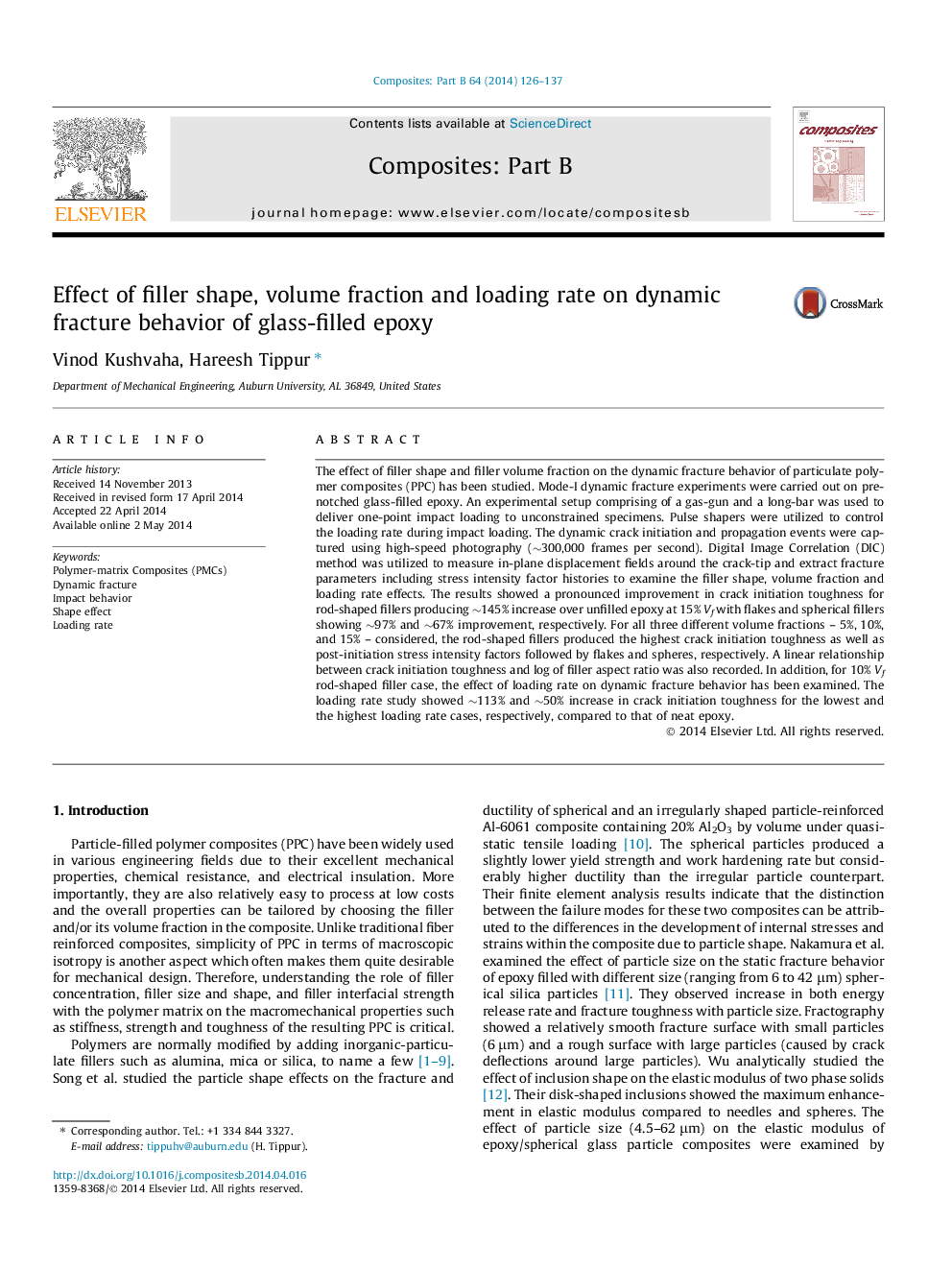| کد مقاله | کد نشریه | سال انتشار | مقاله انگلیسی | نسخه تمام متن |
|---|---|---|---|---|
| 7213637 | 1469421 | 2014 | 12 صفحه PDF | دانلود رایگان |
عنوان انگلیسی مقاله ISI
Effect of filler shape, volume fraction and loading rate on dynamic fracture behavior of glass-filled epoxy
ترجمه فارسی عنوان
تأثیر شکل پرکننده، درصد حجمی و بارگذاری در رفتار شکست پویا اپوکسی پر شده شیشه ای
دانلود مقاله + سفارش ترجمه
دانلود مقاله ISI انگلیسی
رایگان برای ایرانیان
کلمات کلیدی
موضوعات مرتبط
مهندسی و علوم پایه
سایر رشته های مهندسی
مهندسی (عمومی)
چکیده انگلیسی
The effect of filler shape and filler volume fraction on the dynamic fracture behavior of particulate polymer composites (PPC) has been studied. Mode-I dynamic fracture experiments were carried out on pre-notched glass-filled epoxy. An experimental setup comprising of a gas-gun and a long-bar was used to deliver one-point impact loading to unconstrained specimens. Pulse shapers were utilized to control the loading rate during impact loading. The dynamic crack initiation and propagation events were captured using high-speed photography (â¼300,000 frames per second). Digital Image Correlation (DIC) method was utilized to measure in-plane displacement fields around the crack-tip and extract fracture parameters including stress intensity factor histories to examine the filler shape, volume fraction and loading rate effects. The results showed a pronounced improvement in crack initiation toughness for rod-shaped fillers producing â¼145% increase over unfilled epoxy at 15% Vf with flakes and spherical fillers showing â¼97% and â¼67% improvement, respectively. For all three different volume fractions - 5%, 10%, and 15% - considered, the rod-shaped fillers produced the highest crack initiation toughness as well as post-initiation stress intensity factors followed by flakes and spheres, respectively. A linear relationship between crack initiation toughness and log of filler aspect ratio was also recorded. In addition, for 10% Vf rod-shaped filler case, the effect of loading rate on dynamic fracture behavior has been examined. The loading rate study showed â¼113% and â¼50% increase in crack initiation toughness for the lowest and the highest loading rate cases, respectively, compared to that of neat epoxy.
ناشر
Database: Elsevier - ScienceDirect (ساینس دایرکت)
Journal: Composites Part B: Engineering - Volume 64, August 2014, Pages 126-137
Journal: Composites Part B: Engineering - Volume 64, August 2014, Pages 126-137
نویسندگان
Vinod Kushvaha, Hareesh Tippur,
